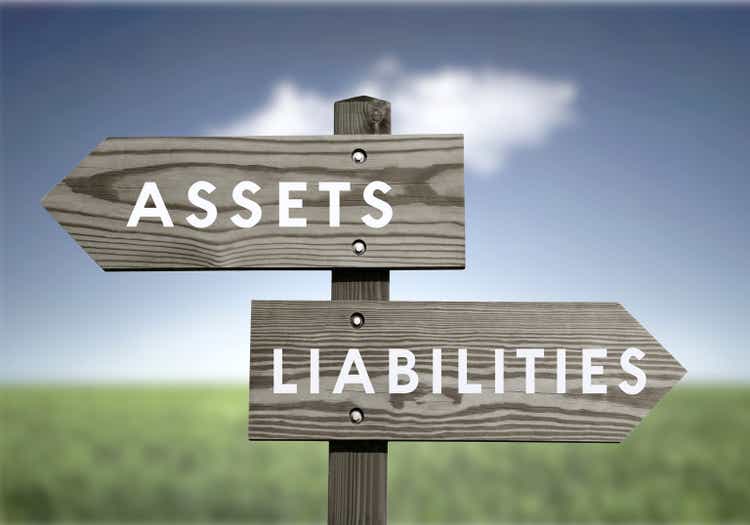TheaDesign/iStock via Getty Images
What is a Liability?
The word ‘liability’ can have different meanings in law, insurance, politics, and finance. In finance and accounting, a liability is a debt that is owed by a person or entity. Financial liabilities can also represent legal obligations to pay money into the future, such as a lease agreement.
Liabilities are key accounting items that are included on a company’s balance sheet and figure prominently in determining a company’s net worth, book value, or shareholder’s equity, which are essentially all the same. Because of that, liabilities are important to investors and there are accepted rules across the business world regarding what constitutes a liability and how they are to be valued in financial statements.
Liabilities Vs Assets
In simple terms, assets are what a company (or individual) owns and liabilities are what they owe.
Liabilities are debts owed or financial obligations. People have liabilities, as do most investment entities such as funds, partnerships, and corporations. For public companies, liabilities represent a key item on the balance sheet that is subtracted from a company’s assets to determine its net worth to investors.
Assets represent anything of value that a company owns. That could include real estate, equipment, product inventory, vehicles, raw materials, and even intellectual property such as patents and copyrights.
When determining what a company is worth – an important metric for shareholders – the values of all the assets are added together. Then, in accordance with the formula
Net Worth = Assets – Liabilities
all debts or other liabilities the company has are subtracted from the total value of assets to determine the net worth. In concept, a company’s net worth is the amount that would remain if the company liquidated all its assets and paid off all its debts. It is also referred to as shareholder’s equity.
Liabilities, therefore, represent an offset to assets on a company’s books and can be viewed as “negative assets”, as they would need to be paid off to obtain a true figure for the shareholder’s equity. If a person or a business has $10,000 (equity) to spend on a car, they can purchase a $30,000 car by borrowing the other $20,000 as a car loan. After the purchase, the net worth (or net equity) – which is the asset value ($30k) less the liability ($20k) – remains at $10,000.
Types of Liabilities
Liabilities are categorized as either current or long-term and identified separately on most balance sheets before being added together as total liabilities.
Current liabilities are those that can be reasonably expected to be paid off within one year, and long-term liabilities are those that would take longer than a year.
Types of Current Liabilities
Current liabilities typically include:
- accounts payable,
- taxes, and wages, all of which are generally due within the next twelve months.
- debt that’s coming due in the next 12 months.
Types of Long-Term Liabilities
Long-term liabilities typically include:
- long-term bonds issued by the company,
- pension obligations to present and past employees
- equipment or property leases that extend beyond one year.
Liability Vs Expense
Expenses represent monetary obligations that have already been paid. Expenses would appear on an income statement rather than a balance sheet since they are neither an asset nor a liability to the company. Expenses include utility expenses, interest paid, purchases of supplies or materials, or payments for services such as maintenance or deliveries.
In contrast, liabilities represent money that is committed but not paid yet and is still owed or obligated. This includes lease payments, unpaid wages, and payments due for materials received or services performed. Once liabilities are paid, they become expenses and are no longer included on a balance sheet.
Liability Examples
Examples of corporate liabilities include:
- Outstanding loans
- Payment plans on equipment purchased
- Payments due to suppliers
- Payments due for products purchased or services obtained
- Accrued wages (worker compensation not yet paid)
- Customer deposits
- Taxes due
- Interest due on outstanding bonds or preferred stock
- Fines or legal obligations unpaid
- Pension contributions unpaid
What is a Contingent Liability?
A contingent liability is a potential liability that may occur in the future. Companies can face the potential for future liabilities if they are in litigation or if they have issued product or service warranties that would need to be honored in the future. Contingent liabilities are not included on a balance sheet, but when such liabilities are deemed likely to occur and can reasonably be estimated, companies are expected to mention them in financial reports.


Be the first to comment